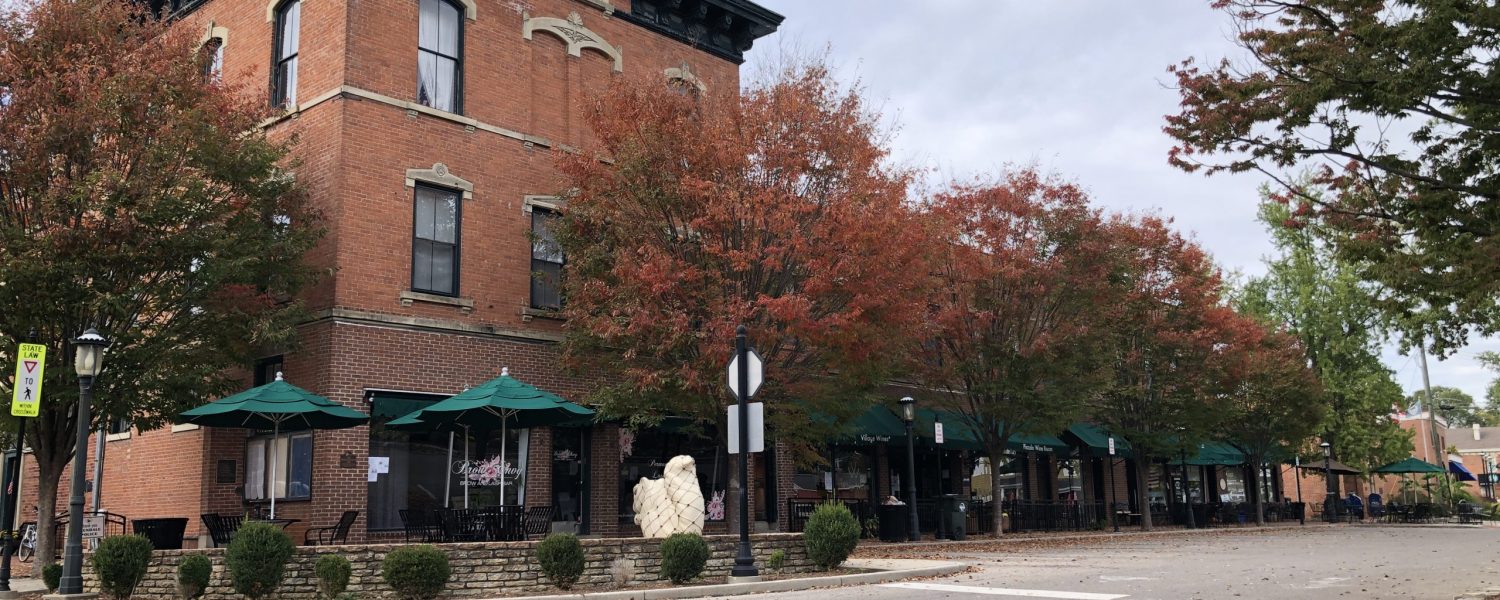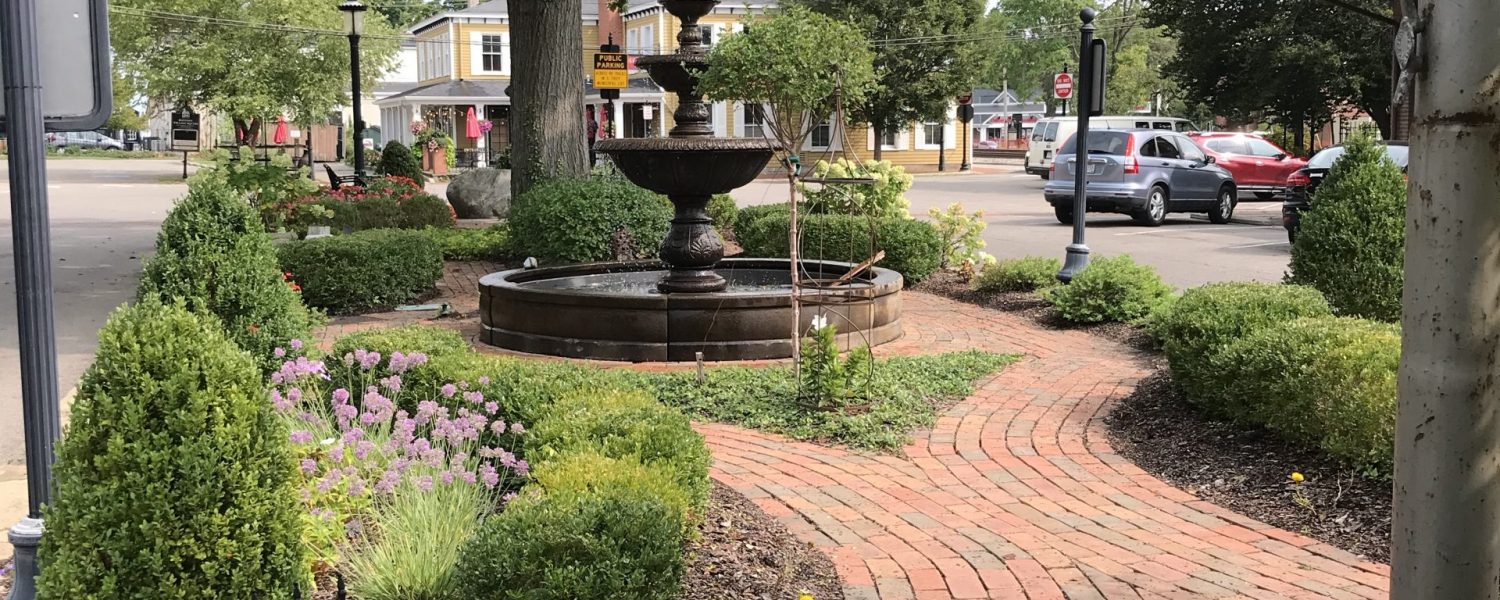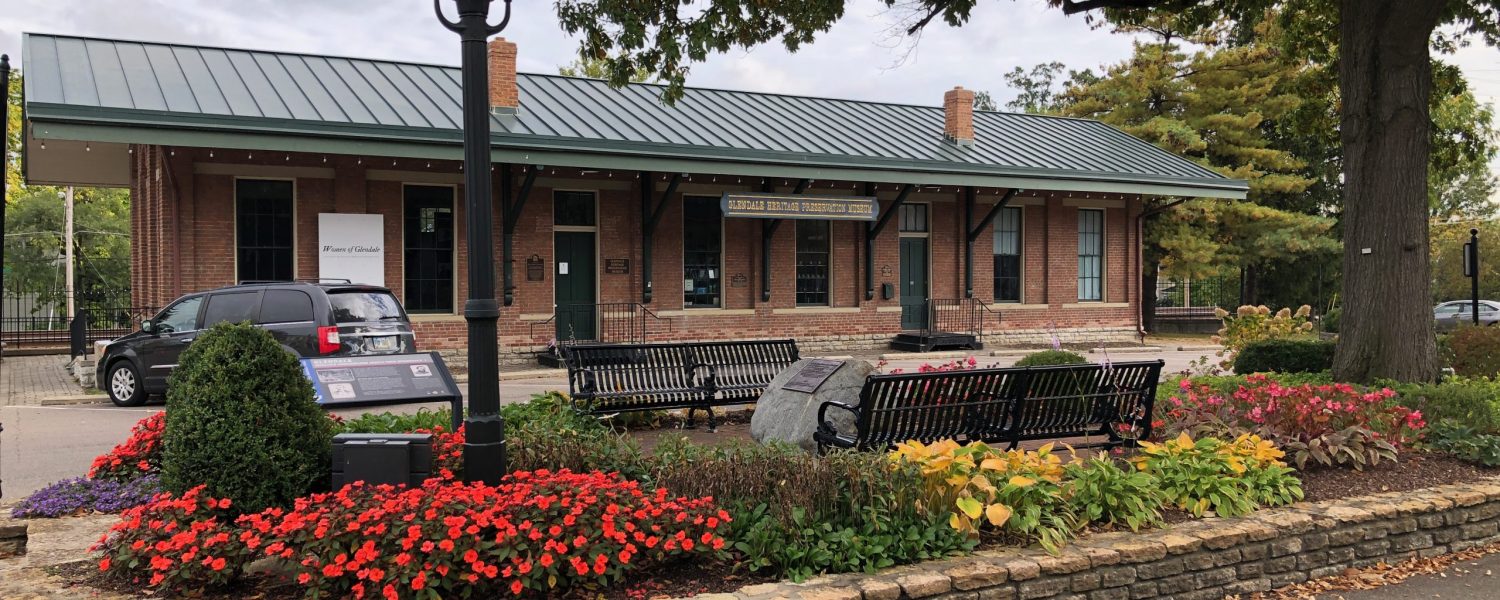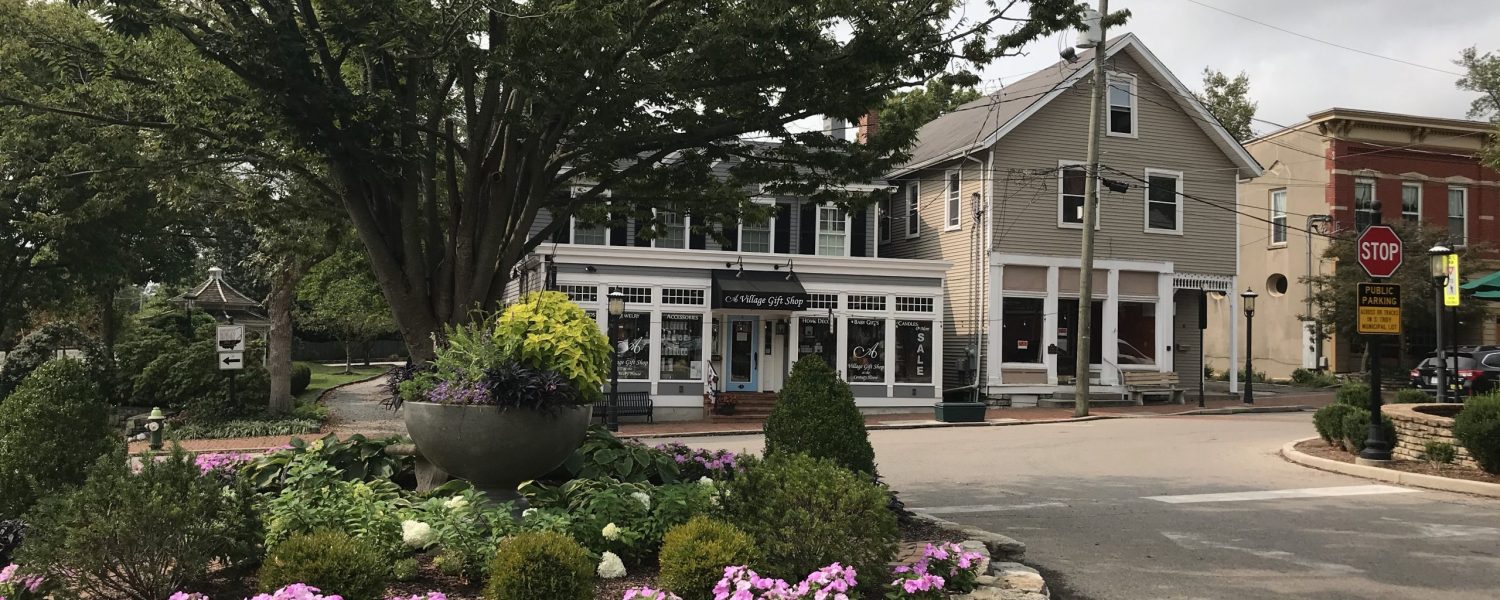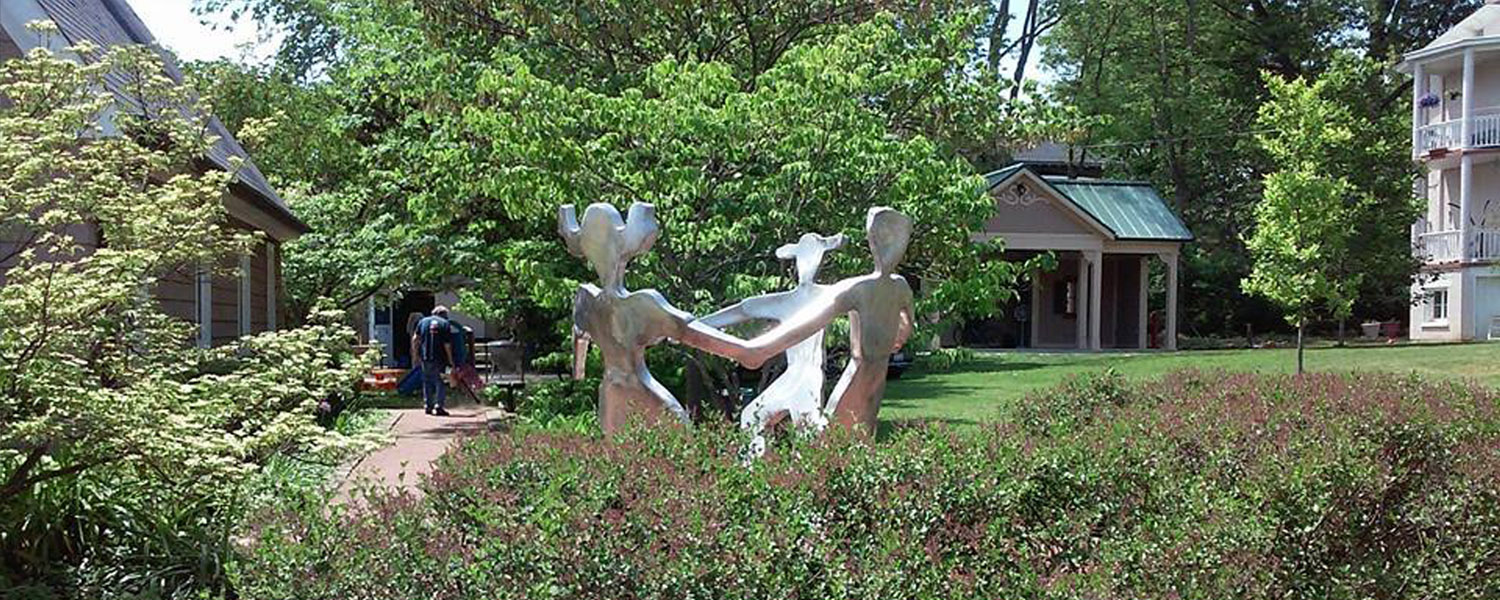Walking Tour through Historic Glendale
Welcome to Historic Glendale
First, a little background about this unique community. Today, Glendale is a village of approximately 2,200 people who live in an area of approximately 1.7 square miles. It is governed by a mayor and six council members who are paid exactly the same as they were when Glendale was incorporated in 1855: absolutely nothing. The Village, conceived as a totally independent community, has its own water works, sewer system, and police department, as well as an active volunteer fire department.
The Glendale Historic District comprises 392 acres of the Village. It was listed in the National Register of Historic places in 1976 and received the National Historic Landmark District designation by the Department of the Interior the following year. With this special recognition Glendale joined such illustrious company as the Charleston Historic District and even the Alamo. Glendale was awarded this distinction because we are the earliest known planned subdivision in America laid out in a curvilinear plan according to topography. Prior to this, towns were normally platted on a grid pattern. Glendale is also known as the first planned railroad commuter town in the U.S.
Let’s get started on this two hour (3½ mile) tour of Historic Glendale:
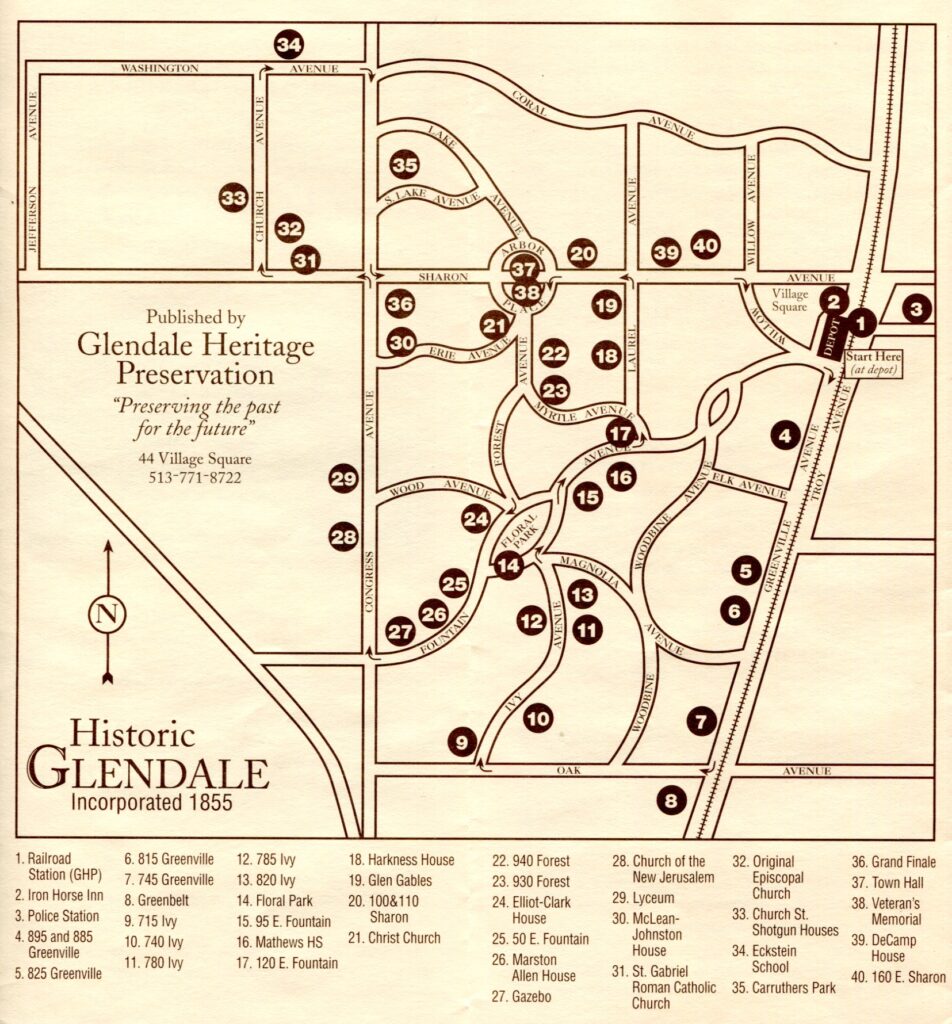
- It is appropriate that we start our tour by the railroad station in the Village Square, as it was all due to the building of the Cincinnati Hamilton & Dayton (CH&D) Railroad in 1851 that Glendale came into being. The original station was built in 1854 but was burned to the ground in 1874. The current train station, now the Glendale Heritage Preservation Museum, was built a couple of years after the fire. The Willis-Dooley block which faces the depot across the square was built in 1880 following a devastating fire which leveled most of the square in 1880.
- Bracker’s Tavern, now Meritage restaurant, was originally a “drover’s inn”. It had a rather checkered career. During prohibition, full meals were served in the front room, with something much more bracing to the rear.
- Across the tracks, the brick and wood building is the police station. It was built in 1871 for $3,900, and is the oldest continuous use police station in America. Today, it houses a beautiful Courtroom complete with mahogany paneling.
- We are going to proceed south on Greenville. To your right are some of the houses built by the workers, engineers, and conductors of the Cincinnati, Hamilton & Dayton Railroad. Nos. 895 and 885 were originally identical, though reversed. But over the years all the so-called gingerbread has been removed from No. 885. The Parker house, No. 895, which was built in the Tuscan Villa Style remains essentially unchanged. The porch window descends to floor level so undertakers could carry out the coffin from the sitting room without removing their tall hats.
- Now we come to no. 825. This home was built by George Crawford for H.W Hughes, a banker, in 1855. So often, houses over the span of years fall on hard times, and this one was no exception. The windows blew out, and the leaves blew in, and this large house in the Post- Colonial Style became known as the haunted house. It was rescued by Mr. Daniel McLaren who lived just to the South.
- Just beyond at No. 815 is the home built for Mr. McLaren in 1869. He was the superintendent of the Cincinnati, Hamilton & Dayton Railroad. The train stopped in front of Mr. McLaren’s house to allow him to descend, before continuing the 300 yards to the station.
- The little house on the right, at No. 745, is typical of a railroad worker’s house. Many who came to build the railroad found the area pleasant and chose to stay. In the late 1800s it became the home of the Van Cleve family. When Mr. William Van Cleve died in 1933, he left his entire estate of $17,000 to the Village of Glendale. Interest from this fund is still used by the trustees of the Park Board to plant street trees throughout the Village.
- Turning right onto Oak Avenue we have reached our greenbelt bordering the south side of Glendale, which is 150 yards wide and about ½ mile in length. Back in the 1940s, Glendale purchased and planted the land to serve as a welcome buffer from the factories that have sprung up just beyond.
- We are going to turn right on Ivy Avenue. Notice the home of Samuel Thompson on your left at No. 715. He was one of the original men of the Glendale Association. His house is probably one of the best preserved houses in the Village. It was built in 1865.
- Mr. Bateman’s house is on the right at No. 740. It was built in 1859 in an adaptation of the Greek Revival style. Note the quoined corners. The front of this house originally faced east with lawns sloping down to Woodbine Avenue. Remember most of these houses were built on 2½ to 5 acre lots. A story is told that lawyer Bateman was in his office downtown when he was notified his house was on fire. When he came out on the commuter train, he was foresighted enough to be accompanied by his insurance adjuster.
- The Robbin house on the right at No. 780 – built 10 years after that of Mr. Bateman – was the first in the Village to sport a mansard roof.
- Prior to the second World War, families stayed mostly in the same area and some even in the same house. The Richardsons lived here from 1866 to 1992. It’s the rambling house on your left (No. 785).
- The Gunnison house on your right at No. 820 has had its 2nd floor removed and its attic lowered onto the first floor. This took place some time after the second World War.
- We are turning right down East Fountain Avenue passing Floral Park or the Big Park as it is known today.
- The low rambling house at No. 95 E. Fountain, on the right, was started in 1855 and has been enlarged twice thereafter. It was the home of Charles Sawyer who served as Lt. Governor of Ohio, Ambassador to Belgium, and eventually became Secretary of Commerce under President Truman.
- Beyond at No. 125 is the home of Judge Stanley Matthews built in 1854. Stanley Matthews was a Mayor of Glendale before going on to become a U.S. Supreme Court Justice. In the year 1859, the Matthews family had five children, four of whom perished within two weeks of scarlet fever. The baby (William Mortimer) was rushed across the street to Mrs. Wright and survived. The judge’s wife bore him four more children. Descendants still live in the Village.
- As we turn left on Laurel, the pink house at No. 120 E. Fountain on your left has doubled in size since 1994. Note the octagonal gazebo built into the corner of the porch.
- The white clapboard house at No. 965 on your left is the Harkness house. This is one of the first homes built in Glendale. It was constructed of brick and covered with clapboards. The small brick building to the left of the main house is the smokehouse which served as a hiding place for horses when Morgan’s Raiders came through the Village in 1863.
- The large house on your left at 985 Laurel is known as Glen Gables, or the Glenn-Harkness-Keys house. It started as a log house in 1807. It has been remodeled five times, the last time being by William Keys. He remodeled the exterior in the Queen Anne style. In the 1930s the interior was divided into six apartments. Today it is a single family home.
- We turn left onto Sharon Avenue. On the right at Nos. 100 and 110 are the twin town houses of Judge Cilley and Samuel Fosdick, the latter a son-in-law of Mr. Harkness. Both of these houses date from the early 1850s.
- We turn left on Erie Avenue and there stands Christ Church, built in 1869 of Ashlar limestone. It was designed by Anderson and Hannaford and built for $20,000. In 1915 a stone tower replaced a wooden steeple on the original building. This was because of the acquisition of 11 bells and a clock, whose total weight was some six tons, not to speak of the 500 pound clock pendulum.
- On the right of the Church is the present rectory built in 1903. As we pass along Forest Avenue look on your left at No. 940 – it’s the one with the wide veranda. This is the original rectory that was built in 1875 for Reverend Pise and was moved to its present location.
- Next door at No. 930 is the home of William Wilson McGrew. It was the first large wooden house built in the Village. It has what is termed patent siding. Mr. McGrew was a jeweler in downtown Cincinnati whose store was in the Pike Opera House. No doubt this accounts for the Sheffield silver hinges that are found on the large ten foot six inch doors on the lower floor.
- We continue along Forest to Floral Park and turn right up Fountain. The Elliot-Clark house at No. 70 on your right had its two top stories removed after the second World War. Mr. Clark’s personal library was housed in the two-story circular room you see on the left of the house. Today it is the master bedroom.
- The house with pillars at No. 50 E. Fountain, on the right, was built by Britton Roberts. His house occupies the highest point in the Village, and was built about 1855. It is said that this house was a stop on the Underground Railroad.
- Next door at No. 40 is the Marston Allen house. The Marston Allen family has been most influential in the Village, and direct descendants continued to live here. His home stands on the right. It is essentially unaltered except for the removal of the verandas which surrounded at least two sides of the house.
- On your right, just after the smaller house, there is a gazebo built by Charles Allen. The gazebo once had a door which led to a room and a tunnel. This tunnel has been filled in. The tunnel, supposedly, goes under Congress Avenue and ends in the basement of Samuel Allen’s house who was the brother of Charles. The story goes that this too was part of the Underground Railroad.
- As we turn right onto Congress, we will pass the Glendale New Church, otherwise known as the Swedenborgian Church, built in 1861 on land donated by the Charles Allen family. Except for the auxiliary building, the Gothic framed church is today almost exactly as it was built both inside and out.
- The next building on your left is the Lyceum, erected in 1891. It has long been a social center of the Village. The are performances every year. Tennis, squash, and paddle tennis are most popular, as are summer holiday picnics.
- On your right is the McLean-Johnston house, on the corner across from Glendale Elementary. It started out as a summer hotel, was at one time a boy’s school, and became the home of Mr. Johnston whose daughter married William Cooper Procter.
- As we turn left onto Sharon Avenue, St. Gabriel Roman Catholic Church is on the right. This actually is the third church building on the site, and this one was dedicated in 1907. To the right of the church is St. Gabriel’s rectory.
- As we turn right on Church Avenue, way over to your right you will see a small building that looks like a garage. This was the site of the original Episcopal Church. In 1866, the Episcopal families built a temporary church which was then located on Sharon Road. In later years it was sold to the Catholic Church for classrooms and moved to this site. More recently it was rebuilt as a garage.
- Some of the houses along Church Street are known as shotgun houses, with rooms one behind the other. One could fire a gun in one end and out the other without touching anything.
- As we turn right on Washington, on your left is the Eckstein School. This was the grade school for the African American children in segregation days.
- As we turn right on Congress, on your left is Carruthers Park dedicated to James Carruthers, Mayor of Glendale for 42 years. Originally it was a lake, and important in the plan of Glendale as it provided water for the railroad engines. By the 1920s the lake had become so polluted that it was drained and filled in.
- Turning left on Sharon Avenue, we pass the Grand Finale Restaurant, once Kelley’s saloon and grocery store. Opposite is Corcoran’s Corner. The building started as the home of James Corcoran, then became a confectionery shop, and served as a dental office for over 45 years.
- On the left is Town Hall designed by Samuel Hannaford in 1875. Arbor Place was the chosen site. The second floor auditorium holds about 500 people. The first floor now houses the volunteer fire department.
- Across the street on your right is the memorial to members of the Uniformed Services, erected in 1955. Every Memorial Day there is a parade led by the Princeton High School band that marches through the Village. It concludes here with a short speech by a local dignitary and the playing of taps.
- The DeCamp house on your left at the NE corner of Sharon and Laurel is one of the least altered houses in the village. In 1865, Emma DeCamp carved her initials and the date of her engagement on the glass window in the dining room which can still be seen. Original cornices, mantels and ceiling ornaments have been preserved in all the principal rooms.
- Next door at No. 160 was the home of Robert Crawford. He was one of the two men responsible for the subdivision plan of the village, and became the first mayor in August of 1855. This home was built in 1853. This Post-Colonial brick building with a five bay front remains unaltered on the exterior.
We will now turn right on Willow Avenue and return to the Village Square. We hope you have enjoyed your tour through the historic district. Please stop by the Glendale Heritage Preservation Museum in the renovated CH&D railroad depot and see the latest display. And don’t forget the shops and restaurants of Historic Glendale.

